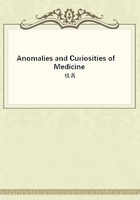
第28章
The incubator seems destined to be the future means of preserving these premature births. Several successful cases have been noticed, and by means of an incubator Tarnier succeeded in raising infants which at the age of six months were above the average. A full description of the incubator may be found. The modified Auvard incubator is easily made; the accompanying illustrations (Figs. 5, 6, and 7) explain its mechanism. Several improved incubators have been described in recent years, but the Auvard appears to be the most satisfactory.
The question of retardation of labor, like that of premature birth, is open to much discussion, and authorities differ as to the limit of protraction with viability. Aulus Gellius says that, after a long conversation with the physicians and wise men, the Emperor Adrian decided in a case before him, that of a woman of chaste manners and irreproachable character, the child born eleven months after her husband's death was legitimate. Under the Roman law the Decenviri established that a woman may bear a viable child at the tenth month of pregnancy. Paulus Zacchias, physician to Pope Innocent X, declared that birth may be retarded to the tenth month, and sometimes to a longer period. A case was decided in the Supreme Court of Friesland, a province in the northern part of the Netherlands, October, 1634, in which a child born three hundred and thirty-three days after the death of the husband was pronounced legitimate. The Parliament of Paris was gallant enough to come to the rescue of a widow and save her reputation by declaring that a child born after a fourteen months' gestation was legitimate. Bartholinus speaks of an unmarried woman of Leipzig who was delivered after a pregnancy of sixteen months. The civil code of France provides that three hundred days shall constitute the longest period of the legitimacy of an infant; the Scottish law, three hundred days;and the Prussian law, three hundred and one days.
There are numerous cases recorded by the older writers. Amman has one of twelve months' duration; Enguin, one of twelve months';Buchner, a case of twelve months'; Benedictus, one of fourteen months'; de Blegny, one of nineteen months'; Marteau, Osiander, and others of forty-two and forty-four weeks'; and Stark's Archives, one of forty-five weeks', living, and also another case of forty-four weeks'. An incredible case is recorded of an infant which lived after a three years' gestation. Instances of twelve months' duration are also recorded. Jonston quotes Paschal in relating an instance of birth after pregnancy of twenty-three months; Aventium, one after two years; and Mercurialis, a birth after a four years' gestation--which is, of course, beyond belief.
Thormeau writes from Tours, 1580, of a case of gestation prolonged to the twenty-third month, and Santorini, at Venice, in 1721, describes a similar case, the child reaching adult life.
Elvert records a case of late pregnancy, and Henschel one of forty-six weeks, but the fetus was dead. Schneider cites an instance of three hundred and eight days' duration. Campbell says that Simpson had cases of three hundred and nineteen, three hundred and thirty-two, and three hundred and thirty-six days';Meigs had one of four hundred and twenty. James Reid, in a table of 500 mature births, gives 14 as being from three hundred and two to three hundred and fifteen days'.
Not so long ago a jury rendered a verdict of guilty of fornication and bastardy when it was alleged that the child was born three hundred and seventeen days after intercourse. Taylor relates a case of pregnancy in which the wife of a laborer went to America three hundred and twenty-two days before the birth.
Jaffe describes an instance of the prolongation of pregnancy for three hundred and sixty-five days, in which the developments and measurements corresponded to the length of protraction. Bryan speaks of a woman of twenty-five who became pregnant on February 10, 1876, and on June 17th felt motion. On July 28th she was threatened with miscarriage, and by his advice the woman weaned the child at the breast. She expected to be confined the middle of November, 1876, but the expected event did not occur until April 26, 1877, nine months after the quickening and four hundred and forty days from the time of conception. The boy was active and weighed nine pounds. The author cites Meigs' case, and also one of Atlee's, at three hundred and fifty-six days.
Talcott, Superintendent of the State Homeopathic Asylum for the Insane, explained the pregnancy of an inmate who had been confined for four years in this institution as one of protracted labor. He said that many such cases have been reported, and that something less than two years before he had charge of a case in which the child was born. He made the report to the New York Senate Commission on Asylums for the Insane as one of three years' protraction. Tidd speaks of a woman who was delivered of a male child at term, and again in ten months delivered of a well-developed male child weighing 7 1/4 pounds; he relates the history of another case, in Clifton, W. Va., of a woman expecting confinement on June 1st going over to September 16th, the fetus being in the uterus over twelve months, and nine months after quickening was felt.
Two extraordinary cases are mentioned, one in a woman of thirty-five, who expected to be confined April 24, 1883. In May she had a few labor-pains that passed away, and during the next six months she remained about as large as usual, and was several times thought to be in the early stages of labor. In September the os dilated until the first and second fingers could be passed directly to the head. This condition lasted about a month, but passed away. At times during the last nine months of pregnancy she was almost unable to endure the movements of the child.